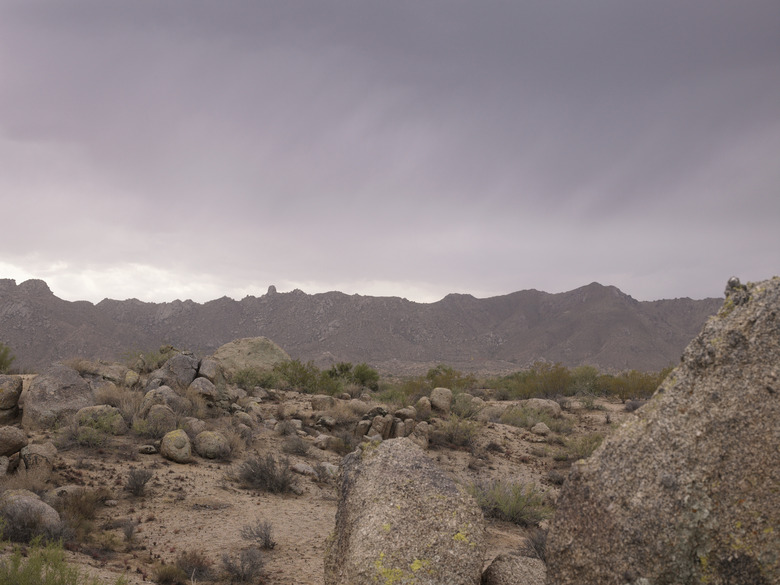What Are Two Ways Wind Causes Erosion?
The phrase "wind erosion" describes the way air movement breaks down stones, rocks and other formations of solid matter on the Earth's surface. Wind erosion uses two main mechanics: abrasion and deflation. Deflation is further broken down into three categories: surface creep, saltation and suspension.
Wind Abrasion
Wind Abrasion
The wind carries tiny particles along with it when it blows. When the wind blows against solid objects, those particles strike the objects. Over time, the cumulative effect of this abrasion can wear down rock, just like a sandblaster, but slower. The process of abrasion produces the interesting rock formations in dry areas such as Arizona, where abrasion wears away parts of rocks and can grind down even the largest stones.
Deflation: Surface Creep
Deflation: Surface Creep
Wind deflation is the movement of objects by the wind. During surface creep, the wind pushes rocks that are too heavy to lift along the surface of the Earth. The grain particles that undergo surface creep are generally between 0.5 to 2 millimeters in diameter. Surface creep is considered the least common form of deflation, accounting for around a quarter of all grain movement due to wind deflation.
Deflation: Saltation
Deflation: Saltation
When particles are 0.1 to 0.5 millimeters in diameter, they can experience saltation. Where surface creep is a pushing motion, saltation is skipping or bouncing. Saltation lifts particles and carries them for short distances. The distances particles travel and the height they reach depends on the wind strength and the weight of the particle. At least half of grain movement is considered to be saltation. Particles that undergo saltation may be worn down and become suspended.
Deflation: Suspension
Deflation: Suspension
The smallest particles, those under 0.1 of a millimeter in diameter, are suspended in the wind. This means the wind carries them for long distances and to great heights. The suspended particles may be visible as dust or haze. When the wind dies down, or when it begins to rain, the particles return to the ground and become part of the topsoil. Suspension is responsible for a large amount of grain movement — between 30 percent and 40 percent.
Cite This Article
MLA
Gellert, Andrew. "What Are Two Ways Wind Causes Erosion?" sciencing.com, https://www.sciencing.com/two-ways-wind-causes-erosion-23246/. 24 April 2017.
APA
Gellert, Andrew. (2017, April 24). What Are Two Ways Wind Causes Erosion?. sciencing.com. Retrieved from https://www.sciencing.com/two-ways-wind-causes-erosion-23246/
Chicago
Gellert, Andrew. What Are Two Ways Wind Causes Erosion? last modified March 24, 2022. https://www.sciencing.com/two-ways-wind-causes-erosion-23246/
